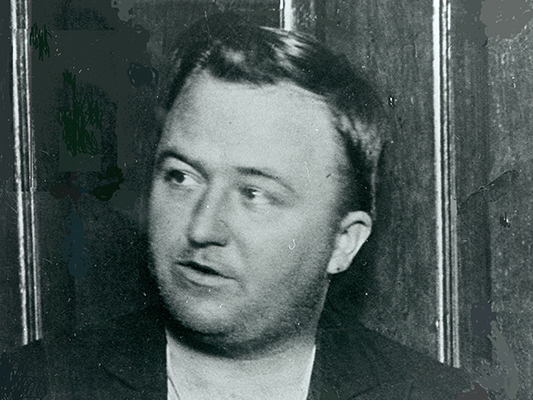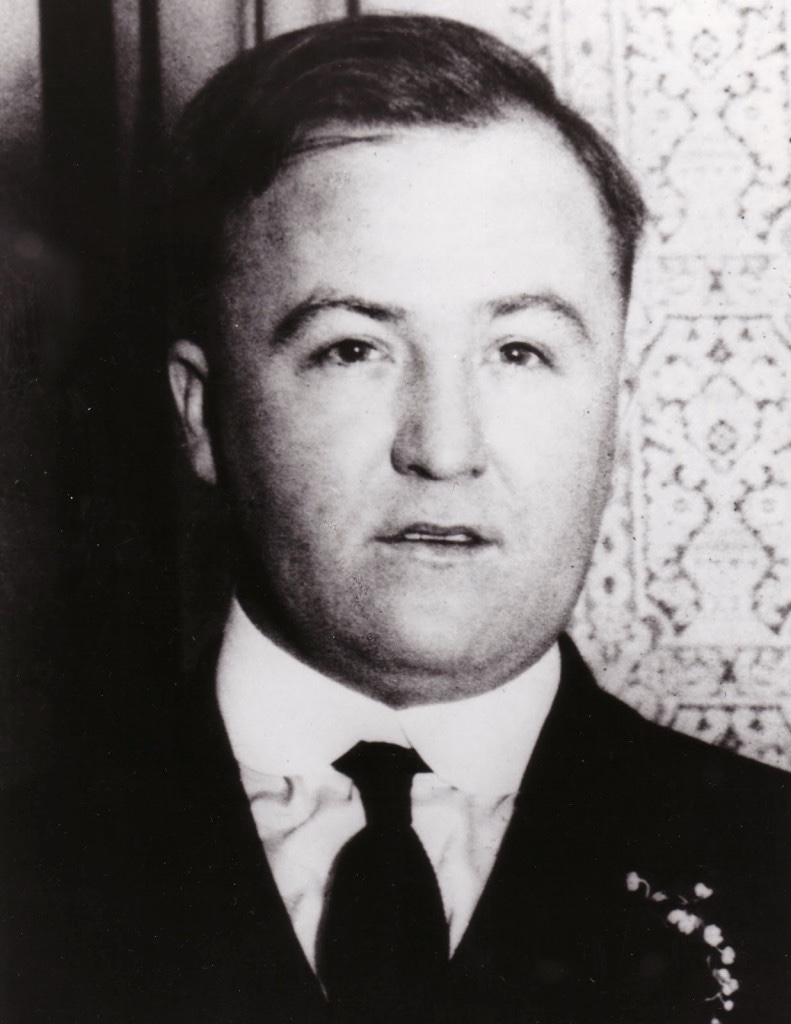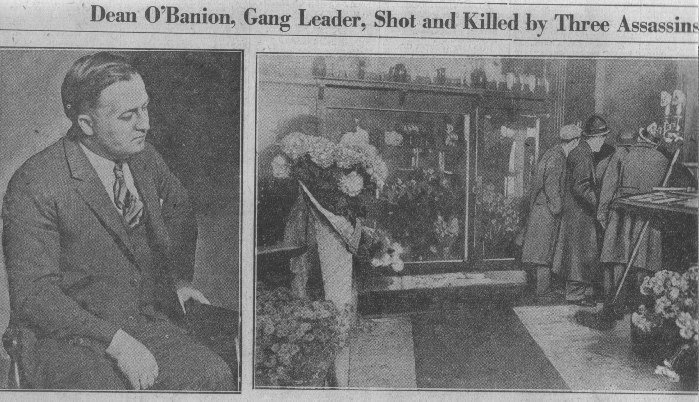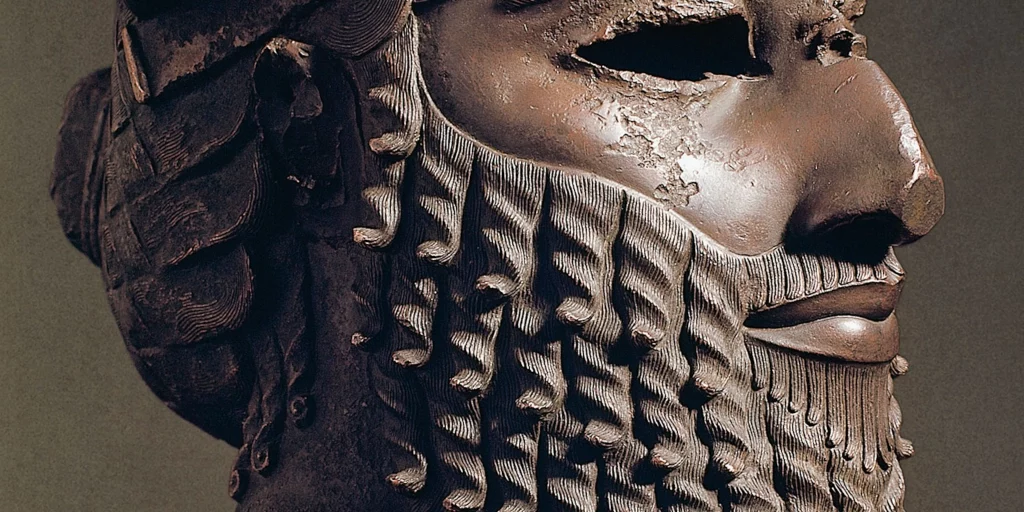Chicago in the 1920s was the hotspot for illegal activities. Crime, gambling, violence, prostitution, racketeering, gang activities, and drugs were all a big part of the city. But perhaps the biggest activity was bootlegging, which rose as a result of prohibition.
Among the most active participants were the likes of Al Capone, Johnny Torrio, and a popular Irish bootlegger named Dean O’Banion. He became one of the most respected gang members and ran Chicago’s North Side, while Torrio and Capone were in charge of the South Side.
While there were some territories they shared, for the most part in the early 1920s, the two sides kept their peace.
However, several events leading into 1924 caused tension between the two sides. Eventually, it led to O’Banion being shot and killed by the South Side Gang.
O’Banion’s murder was like the first shot at Fort Sumter–what followed was a crime war that took Chicago by storm through the rest of the Prohibition era.

O’Banion’s Early Life – The Intimidator
After O’Banion’s mother passed away at just eight years old, he was taken in by his family and moved to Chicago’s North Side. The neighborhood, mostly occupied by Irish Americans, was notorious for being low-class and high in crime.
O’Banion got involved with trouble early in life, forming a street gang with guys nicknamed “Bugs,” “The Schemer,” and “Hymie.” By the time O’Banion was 20 years old, Chicago was brimming with all kinds of crime and violence, and the neighborhood where O’Banion lived fit right into that activity.
The first kind of work that O’Banion and his gang got into was called “slugging.” Newspaper wars were common in the early 1900s, with newspapers hiring gang groups to intimidate sellers and buyers of rival newspapers.
They would use all kinds of tactics to harm a rival paper and damage their name. Sometimes these newspaper wars would become violent, with streetfights and crime being a result.
O’Banion’s job was to intimidate, something he was good at given his size and tough nature. He would go to newspaper stand vendors and use intimidation tactics and make threats if they weren’t selling the newspaper he was hired by.
At times, he had to use force. For a while, he worked for the Chicago Tribune but also spent some time working for their rivals.
O’Banion’s success with the newspaper wars opened up more jobs for him in other professions. Politicians would hire him to try and influence votes, and Wall Street traders used him to try and influence people to buy or sell a stock. His gang soon became known as the “Market Street Gang.”
O’Banion found himself in trouble in 1909, when he was first arrested and convicted of robbery and assault. But his name with gangs grew, especially given his bouldering size and his reputation of being able to beat the living daylights out of someone.
As 1920 arrived, Prohibition was on the rise. It was an opportunity for aspiring criminals to turn into a new kind of gang activity. As a result, O’Banion saw dollar signs.

The Prohibition Era
Bootlegging was big in Chicago, given that there were a lot of Irish and German immigrants living there, and they loved their alcohol. By 1920, O’Banion was ready to get in on the action and broke through big in the Chicago bootlegging business.
He quickly rose in power, becoming head of the biggest gang on the North Side and commanding some of the best breweries and distilleries. He successfully cut deals with whiskey and gin distributors and stole alcohol from other bootleggers.
By 1921, he was reportedly making $1 million a year in alcohol sales alone.
He became rivals with Johnny Torrio, who was the South Side’s notorious bootlegger and gang leader. He also clashed with Al Capone, who at the time was an underboss of Torrio and was building his own bootlegging business.
O’Banion tried to work out peace deals with Torrio and Capone on the property and businesses he worked with, not wanting to interfere. As part of the agreement, O’Banion distributed with the Gold Coast, the wealthiest area along Lake Michigan. He raked in huge money as a result.
O’Banion also got a piece of Cicero, which was part of the territory on the South Side that Capone and Torrio shared. O’Banion established and did business with several big nightclubs and restaurants. All three men were also invested in a popular Chicago lakefront casino, The Ship.
In 1921, O’Banion bought a flower shop that he used as his business headquarters. The floral shop did good business for mob funerals. Any time a popular figure died, they were referred to O’Banion’s flower shop to purchase florals.
Peace Breaks Down
The truce between O’Banion, Torrio, and Capone eventually broke down. In 2024, the Genna Brothers, a rising gang on the West Side, expanded its bootlegging into O’Banion’s territory. O’Banion soon discovered that the Genna Brothers were tied in with Torrio’s South Side gang.
When O’Banion asked Torrio to take action against the Genna Brothers, Torrio did nothing. When the Genna’s racked up a gambling debt, O’Banion refused to forgive it, and tension began to reach an all-time high.
Things got to a boiling point after the Sieben Brewers raid. O’Banion and Torrio both had shares in the brewery. But after O’Banion found out an inside tip that a raid was imminent at the brewery, he sold his shares, putting Torrio in charge.
Shortly after, the police came in, busting Torrio, O’Banion, and their gangs. O’Banion wasn’t punished that severely since he had no previous prohibition-related arrests.
Additionally, he had already sold his shares and received his payments for the brewery sale. When Corrio asked for the money back, O’Banion refused it. Torrio lost the brewery along with his money, which for him was the last straw.
While he was at one of his local flower shops, O’Banion met with a close associate of Torrio’s. After the associate shook hands with O’Banion, offering a temporary truce, he pulled him in.
Two gunmen from presumably the Genna organization opened fire on O’Banion. He was found dead with six gunshot wounds. An investigation ensued, but police never solved the murder.

It was one of the biggest funerals Chicago had ever seen. Capone and Torrio attended the funeral along with the Genna Brothers and South Side Gang members. The funeral, held in Mount Carmel, had a mile-long procession with 26 cars and trucks used for the flowers alone.
This was just the start, however, of violence in Chicago. At the head of it was Capone, who became one of the biggest crime bosses in the U.S., especially when Torrio, who was facing assassination attempts after O’Banion’s death, handed over all his operations to Capone.
Capone’s power grew immensely after that. O’Banion’s murder started a massive war between the two territories in Chicago.
Murders and violence continued to gain steam in the late 1920s. Bugs Moran, who took over the North Side Gang after O’Banion’s death, sent seven North Side mobsters to engage with the South Siders.
But they were all killed in the St. Valentine’s Day Massacre of 1929. Moran, however, would survive through the end of Prohibition.
References
“Dean O’Banion.” The Mob Museum. Nd. https://themobmuseum.org/notable_names/dean-obanion/.
“Dean O’Banion: Chicago Remains To Be Seen.” CemeteryGuide.com. Nd. https://www.cemeteryguide.com/obanion.html.

